Preparing for Clipper Race 2023-24
Published on August 30th, 2022
The 2019-2020 Clipper Round the World Yacht Race was to finish in just under one year, but when the teams arrived in Asia during the pandemic, with health restrictions postponing further progress, it would take nearly three years to complete this contest for amateur crews led by a professional skipper.
But with the twelfth edition crossing the final finish line in July 2022, which was the fourth circumnavigation for the 11 Clipper 70 racing yachts, it was time to get them to HQ in Portsmouth Harbour, UK and ready them for the start of the next race.
Having just crossed over 40,000 nautical miles though some of the most inhospitable stretches of the world’s oceans, withstanding both extreme heat and freezing temperatures, the equally-matched purpose-built fleet will undergo an extensive decommissioning, refitting and commissioning process ahead of the Clipper 2023-24 Race.
No stone is left unturned as the 20-strong team of both dedicated refit and Clipper Race maintenance staff will invest approximately 35,000 work hours to strip out, lift, inspect, maintain, clean, and, where necessary, repair or replace parts or fittings.
Justin ‘Jay’ Haller, Chief Engineer, has been with the Clipper Race for 20 years. He has worked on every generation of Clipper Race ocean racing yachts and oversees the mammoth refit operation.
“These boats are over-specced compared to what you’d see on a regular yacht,” said Haller. “Everything down to the thickness of the hull is over-specced. So although I’m not surprised, I’m pleased to see that the boats have held up really, really well. I have no qualms about them doing another race. There are some cosmetic repairs, naturally, but that’s to be expected.
“The boats come out of the water for 36 days and we work on them two at a time. After the masts are removed, one of the first jobs we do is take the generators and main engines out to work on them in the yard.”
Former race skipper Dan Jones is part of the refit team and has been overseeing the first engine lift. “When we lift the engines, we have to disconnect the gear box and the shaft to the propeller,” he explains. “We then have to disconnect the fuel lines and the water pipes, battery cables, alternators, mounts and then the actual engine mount.
“We can lift the engine through the hatch on deck and then lower it to the hanger floor so that we can sandblast the brackets, replace the mounts, remove and service the raw water pumps, remove the alternators to send them away for a strip and service. Once it’s out it’s much easier to do that way.”
Scheduling the work is a task in itself to ensure the yachts are ready in time for the next intake of training and to fulfil Clipper Events sailing commitments. The workload is extensive, as Haller explains: “Each boat is stripped, sanded and painted in the interior. Once painted, we replace all the piping – saltwater, freshwater, all of it as a matter of course. The floorboards are then inspected and if any are damaged they will either be sanded down, repainted and covered with kiwi grip – or replaced if necessary. The gas infrastructure is replaced as a matter of course.
“Each yacht’s wiring gets inspected and replaced, then all the standing rigging is stripped off and replaced. At this point, we often get the team at Sta-Lok to take a look at the fittings that have come off so they can see how well it has stood up against the elements and for future product development. The masts are inspected and stress tested where necessary.
“We have had surveyors down who confirmed that there’s nothing major we need to do. However, we will still remove the keel bolts and inspect them as a matter of course to see if there is any corrosion on the keel and to check the bolts themselves.”
For the first time, thanks to the Coppercoat covering, the Clipper Race fleet doesn’t need antifouling – saving time and reducing the refit’s carbon footprint with the environmentally responsible coating. “The Coppercoat has lasted REALLY well!” noted Haller. “Each of the hulls will have a light sand.
“We had a rudder for one of the boats rebuilt in Cape Town which we didn’t have time to Coppercoat, so we had to use regular antifoul on it. It’s a stark comparison, it has about half an inch of growth on it, whereas the rest of the boat had Coppercoat, including the yacht’s other rudder and it was as good as new with just a simple pressure wash.”
The refit also offers Haller and his team the chance to update, upgrade, or make changes to improve performance, comfort or the sailing experience for future race crews. Once back in the water, each yacht has its mast, which has also undergone full inspection and had each wire replaced, restepped and is rigged with a whopping 1,439m (excluding spares) of Marlow Ropes lines.
There’s no rest for the refit team, which is split up to tag team the conveyor belt process of each stage of the refit. “A week before the pair of yachts are ready to go back in the water, we begin decommissioning the next pair of yachts,” said Haller. “Everything comes off and goes into a container, and then will swap over with the current two yachts which be recommissioned and ready to go.”
Once the yachts are back in the water, the refit team thoroughly tests the systems before they are used again. But even when the entire fleet has been through refit, and systems are checked, the inspections don’t stop. “The fleet is Cat2 registered – for UK inshore and coastal sailing – until Race Start,” explained Haller. “Then before the race they have the CAT0 survey which is another in depth survey.”
The Clipper Race is looking to expand its refit team, and is hiring refit staff to help ensure the fleet is race ready ahead of the 2023-24 edition. Find out more via the Clipper Race careers page.
The Clipper Round the World Yacht Race was established in 1996 by Sir Robin Knox-Johnston, the first person to sail solo non-stop around the world in 1968-69. His aim was to allow anyone, regardless of previous sailing experience, the chance to embrace the thrill of ocean racing; it is the only event of its kind for amateur sailors.
Held biennially, the 2019-20 Clipper Race got underway September 1 for the fleet of eleven identical Tony Castro designed Clipper 70s. As the most subscribed round the world race, the 12th edition had attracted 688 crew representing 43 nationalities for the 41,000+ nm course.
However, when the fleet arrived in Asia, the COVID-19 pandemic blocked the fleet from the planned routes in China. The 11 Clipper 70s remained at Subic Bay Yacht Club in the Philippines since March 2020 after organizers and Race Crew were forced to return home due to pandemic restrictions. The race restarted in March 2022 and finally concluded in July 2022.
Race details: www.clipperroundtheworld.com


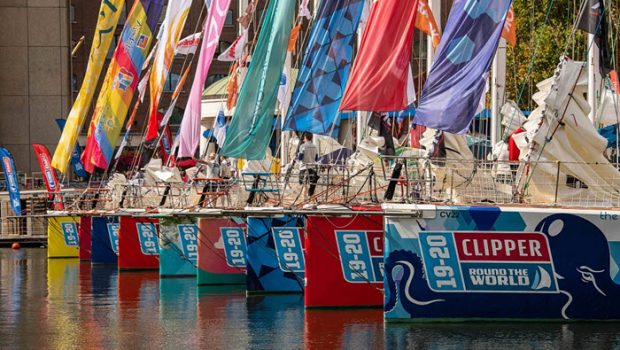


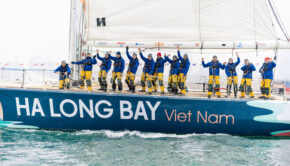
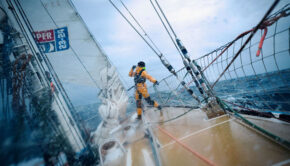
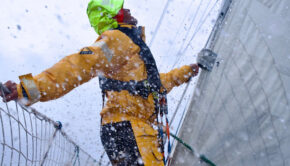
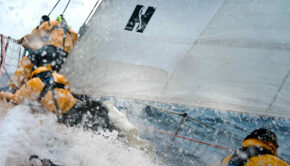
 We’ll keep your information safe.
We’ll keep your information safe.